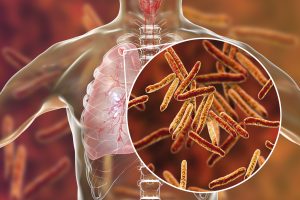Methods for Using Gold (III) Compounds to Potentially Treat Tuberculosis (TB)
Tuberculosis (TB) is one of the top 10 causes of death worldwide, according the World Health Organization (WHO), and multidrug-resistant TB (MDR-TB) remains a public health crisis and a health security threat. TB attacks the lungs and is caused by Mycobacterium tuberculosis (Mtb), a bacteria that can also infect other parts of the body, such as the kidneys, spine and brain.
Now, researchers at UCF and the University of the Witwatersrand, Johannesburg have identified compounds that could potentially be used to treat TB and be effective against drug-resistant strains of mycobacteria. The researchers found that gold (III)-complexed compounds demonstrate antimicrobial activity against the TB bacteria. The compounds are also active against Mycobacterium abscessus (Mab), a pathogen that causes TB-like pulmonary infections, and soft-tissue and wound infections.
Infections caused by Mtb and Mab are difficult to treat and require long treatment times. Moreover, the emergence of drug-resistant Mtb strains and the high level of intrinsic resistance of Mab have increased the need for novel drug scaffolds that target both pathogens and shorten treatment times.
Benefits
- Enables the development of noncytotoxic drugs that are active against both Mtb and Mab (and other non-tuberculosis mycobacterial pathogens)
- Can be used to develop novel drugs that target bacterial topoisomerases
Applications
Treatment of tuberculosis
For more information, refer to the technology sheet.
